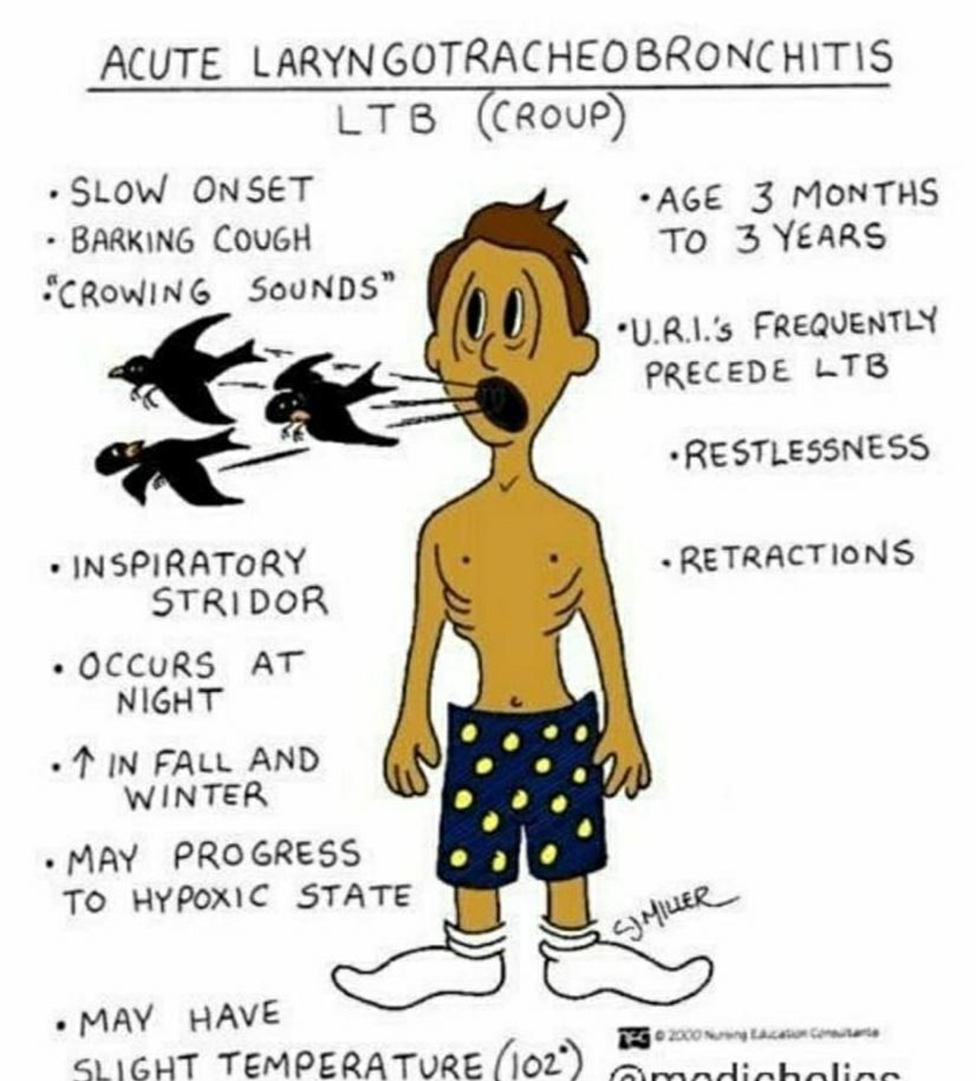The parents of a 10-year-old child in remission from leukemia are upset over the appearance of cushingoid characteristics in the child from long- term use of corticosteroids, currently being administered every other day. Which therapeutic statements would the nurse make to the parents about the cushingoid appearance? Select all that apply.
The manifestations are lessened by taking the prednisone every other day Instead of daily."
"You need to be sure to talk to the doctor about the cushingold characteristics."
Which manifestations of this condition do you find mest troublesome?
"I am sure it will be all right they hardly look unusual
The cushingoid appearance will gradually disappear once the corticosteroids are tapered and discontinued."
Correct Answer : A,B,E
A."The manifestations are lessened by taking the prednisone every other day instead of daily."
Explanation: Cushingoid characteristics can be related to prolonged corticosteroid use. Adjusting the dosing schedule, such as administering prednisone every other day instead of daily, may help minimize these manifestations.
B."You need to be sure to talk to the doctor about the Cushingoid characteristics."
Explanation: Open communication with the healthcare provider is crucial. Discussing the concerns about Cushingoid characteristics with the doctor allows for appropriate evaluation and potential adjustments to the treatment plan.
C."Which manifestations of this condition do you find most troublesome?"
Explanation: This question opens the discussion to identify specific concerns and allows the nurse to address them individually.
D."I am sure it will be all right; they hardly look unusual."
Explanation: This statement may downplay the parents' concerns. It's essential to acknowledge their worries and provide accurate information about the potential impact of corticosteroids and the plan for managing Cushingoid characteristics.
E."The Cushingoid appearance will gradually disappear once the corticosteroids are tapered and discontinued."
Explanation: Cushingoid characteristics are associated with the side effects of corticosteroid use. The nurse should provide reassurance that, in many cases, these characteristics can gradually improve once the corticosteroid dose is tapered and eventually discontinued.
Nursing Test Bank
Naxlex Comprehensive Predictor Exams
Related Questions
Correct Answer is B
Explanation
A. The child is too young to receive antibiotics: This statement doesn't address the actual reason for not prescribing antibiotics for croup, which is primarily due to its viral nature.
B. "Antibiotics are not indicated unless a bacterial infection is present."
Explanation:
Viral laryngotracheobronchitis, commonly known as croup, is typically caused by a viral infection, most commonly by the parainfluenza virus. Antibiotics are not effective against viruses. Therefore, unless a bacterial infection is also present, prescribing antibiotics is not necessary or beneficial in treating croup.
C. The child may be allergic to antibiotics: While antibiotic allergies are a consideration, it doesn't explain why antibiotics are not prescribed for viral illnesses like croup.
D. The child still has the maternal antibodies from birth and does not need antibiotics: Maternal antibodies can offer some protection against infections, but the primary reason for not using antibiotics in viral infections like croup is because antibiotics are ineffective against viruses.

Correct Answer is D
Explanation
A. "Newborns are abdominal breathers."
Explanation: While it is true that newborns primarily use their diaphragms for breathing (abdominal breathing), this statement does not specifically address why the respiratory rate should be counted for a full minute.
B. "Activity will increase the respiratory rate."
Explanation: This statement acknowledges that activity can influence the respiratory rate but does not specifically address the need to count for a full minute to capture the irregular patterns.
C. "Newborns do not expand their lungs fully with each respiration."
Explanation: This statement highlights a characteristic of newborn respiratory physiology but does not specifically explain the importance of counting the respiratory rate for a full minute.
D. "The rate and rhythm of breath are irregular in newborns."
Explanation:
Newborns often have irregular breathing patterns, and counting the respiratory rate for a full minute helps capture the variations in rate and rhythm accurately. Newborns may experience periods of rapid breathing followed by periods of slower breathing, and their respiratory patterns can be influenced by sleep-wake cycles, feeding, and other factors. Counting for a full minute provides a more comprehensive and representative assessment of the newborn's respiratory status.
Whether you are a student looking to ace your exams or a practicing nurse seeking to enhance your expertise , our nursing education contents will empower you with the confidence and competence to make a difference in the lives of patients and become a respected leader in the healthcare field.
Visit Naxlex, invest in your future and unlock endless possibilities with our unparalleled nursing education contents today
Report Wrong Answer on the Current Question
Do you disagree with the answer? If yes, what is your expected answer? Explain.
Kindly be descriptive with the issue you are facing.
